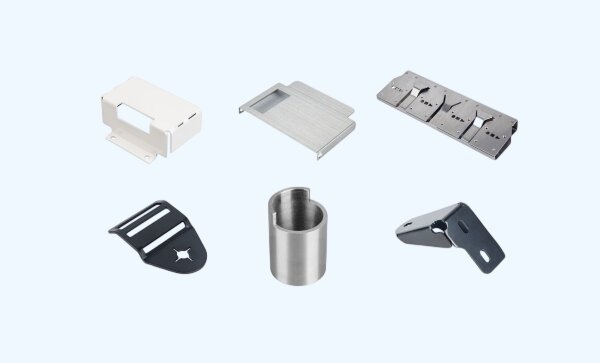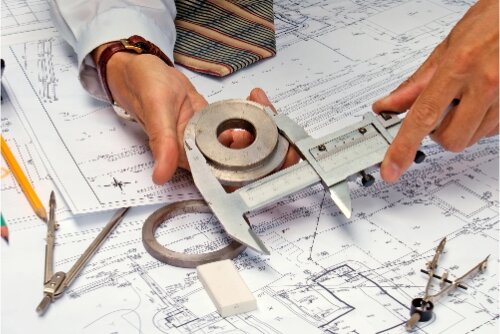Every CNC milling project starts with one key question. What material should you use? The right choice can make your parts strong, accurate, and affordable. The wrong choice can cause delays, extra costs, and wasted effort. Many projects face rework simply because the material was not a good match. Choosing well from the start can save you both time and stress.
Your choice of material sets the direction for the whole project. It affects how the part performs, how easy it is to machine, and how much it costs. Let’s look at the main factors that matter and see how to compare them effectively.
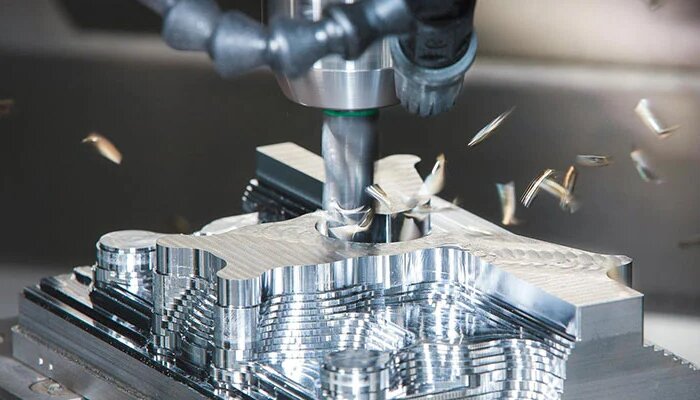
Why Material Choice Matters in CNC Milling?
Material affects everything from tool wear to machining time. Softer materials like plastics cut quickly but may lack strength. Harder metals resist wear but may increase machining costs. If the material doesn’t fit the part’s purpose, you risk poor performance or failure in real-world use.
Some materials expand or contract more with heat. Others might not hold tight tolerances. Material also affects surface quality, edge sharpness, and how easily parts can be finished or coated.
Choosing the wrong one can lead to slow production, tool breakage, or scrapped parts. A good fit saves time, protects tools, and helps the part perform as it should.
Common Material Categories for CNC Milling
CNC milling works with a wide range of materials. Each type has its balance of strength, weight, machinability, and cost. Here are the main categories you will see in most projects:
Metals
- Aluminum alloys
- Stainless steel
- Carbon steel
- Brass and copper alloys
- Titanium
Plastics and Polymers
- ABS
- Nylon
- Polycarbonate (PC)
- PEEK
- Acetal (POM)
Composites and Specialty Materials
- Fiberglass-reinforced plastics (FRP)
- Carbon fiber composites
- Tooling board
- Ceramics
Metals in CNC Milling
Metal is a top choice in CNC milling because it offers strength, heat resistance, and precision. Each type of metal has its strengths. Here’s how common options compare.
Aluminum Alloys: Lightweight and Versatile
Aluminum is one of the easiest metals to machine. It cuts fast, holds tight tolerances, and has a good surface finish. It’s also light, corrosion-resistant, and cost-effective.
Common grades like 6061 are used in aerospace, automotive, and consumer products. Aluminum works well for prototypes and finished parts that don’t need extreme strength. It’s not ideal for parts under heavy loads or extreme heat.
Stainless Steel: Corrosion-Resistant and Durable
Stainless steel stands up to moisture, chemicals, and heat. It’s great for medical, food-grade, or marine parts. Grades like 304 and 316 are often used where rust resistance is needed.
But it’s harder to machine. It dulls tools quickly and needs slower speeds. You’ll trade some machining ease for durability and strength.
Mild Steel: Affordable and Strong
Mild steel is a good balance of strength, cost, and ease of use. It machines well and works for structural parts, brackets, and general-purpose components.
It doesn’t resist corrosion on its own, but it can be coated or painted. Mild steel is great when high strength is needed, but corrosion is not a big concern.
Titanium: High Strength-to-Weight Ratio
Titanium is strong, light, and resists corrosion and heat. It’s used in aerospace, medical, and high-performance parts. It performs well under stress and heat, while staying light.
It’s hard to machine. It causes high tool wear and needs careful control of speed and cooling. It’s also expensive. Choose it only when the benefits are needed.
Brass and Copper: Excellent Machinability and Conductivity
Brass machines very well. It makes clean cuts and wears down tools slowly. It’s good for fittings, gears, and decorative parts. It also resists corrosion.
Copper conducts electricity and heat better than most metals. It’s used for electrical parts and heat sinks. It’s soft and harder to hold during cutting, so fixturing needs attention.
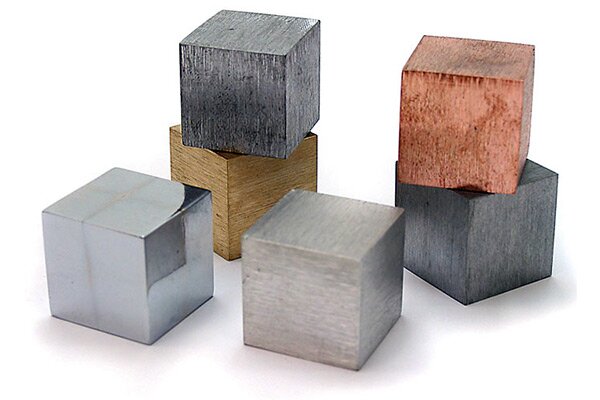
Plastics and Polymers in CNC Milling
Plastics offer unique advantages like low weight, chemical resistance, and electrical insulation. They also reduce machining costs and are great for non-structural parts.
ABS: Tough and Cost-Effective
ABS is a popular plastic for prototyping and low-stress parts. It’s tough, impact-resistant, and easy to machine. It has good dimensional stability and surface finish.
ABS is not great for high-heat or outdoor use, but it’s ideal for housings, brackets, and test parts. It’s also one of the most budget-friendly plastics available.
Nylon: Wear-Resistant and Self-Lubricating
Nylon is strong and wear-resistant. It handles friction well and doesn’t need extra lubrication. It’s used in gears, bushings, and sliding parts.
It absorbs moisture, which can change dimensions. For dry or high-speed moving parts, nylon performs well, but avoid it in wet or humid settings without treating the material.
PEEK: High-Performance and Heat-Resistant
PEEK is a top-tier plastic. It stands up to high temperatures, chemicals, and wear. It keeps its shape under stress and heat.
It’s often used in aerospace, medical, and high-tech fields. It’s expensive and harder to machine than other plastics, but its strength and thermal stability make it worth it in critical parts.
Acrylic: Transparent and Easy to Machine
Acrylic is clear and lightweight. It’s used for display windows, covers, and light guides. It machines easily and polishes to a glass-like finish.
It’s more brittle than other plastics. It can crack under load or impact, so avoid it for load-bearing parts. But it’s great for cosmetic or see-through parts.
Delrin (Acetal): Low Friction and Dimensional Stability
Delrin, or acetal, has low friction and high stiffness. It machines well and holds tight tolerances. It’s good for parts like bearings, rollers, and pulleys.
It resists moisture and chemicals better than nylon. It’s stable in size and shape, which makes it reliable for parts that need precision without swelling or warping.
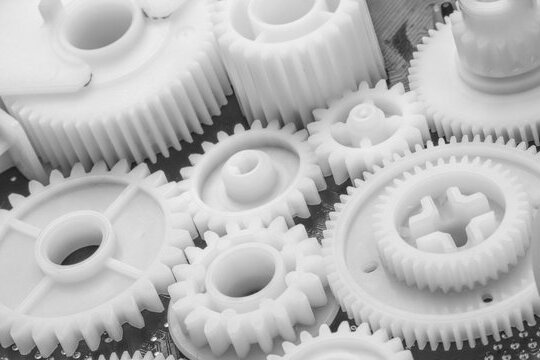
Specialty Materials and Composites
Some projects call for materials that go beyond standard metals or plastics. Specialty composites and advanced materials offer unique benefits for strength, weight, or resistance.
Carbon Fiber Composites: High Strength and Low Weight
Carbon fiber composites are very strong and extremely light. They resist bending and have low thermal expansion. These features make them useful in aerospace, robotics, and high-performance parts.
They don’t machine like metal or plastic. The fibers can fray, and dust is harmful to breathe. Machining needs special tools and care. However, when weight and stiffness matter most, carbon fiber is a top pick.
G10/FR4: Electrical Insulation and Mechanical Strength
G10 and FR4 are fiberglass-reinforced laminates. They’re known for their electrical insulation, strength, and moisture resistance. These materials are used in circuit boards, enclosures, and structural supports.
They machine well with the right tools, but they wear tools faster than plastics. G10 and FR4 are useful when you need electrical insulation and strength in one part.
Ceramics: Extreme Hardness and Heat Resistance
Ceramics are hard, wear-resistant, and heat-tolerant. They’re used in electronics, aerospace, and cutting tools. They hold up in harsh environments that damage metals or plastics.
They’re brittle and can crack during machining. Special tools and slow speeds are needed. Ceramics work best for specific high-temperature or high-wear uses—not for general-purpose parts.
CNC Milling Material Comparison Table
| Attribute | Metals | Plastics & Polymers | Composites & Specialty Materials |
|---|---|---|---|
| Common Examples | Aluminum, Stainless Steel, Mild Steel, Titanium, Brass | ABS, Nylon, PEEK, Acrylic, Delrin | Carbon Fiber, G10/FR4, Ceramics |
| Strength | High strength, good for load-bearing applications | Moderate strength, suitable for non-structural parts | Very high (carbon fiber), brittle (ceramics) |
| Weight | Medium to heavy | Very lightweight | Very lightweight (carbon fiber), medium (G10), varies (ceramics) |
| Corrosion Resistance | Varies: stainless is high; mild steel is low | High resistance | High (carbon fiber, G10), excellent in harsh conditions |
| Thermal Resistance | Good to excellent (especially stainless, titanium) | Low to medium (except PEEK) | Excellent (ceramics, PEEK); low expansion (carbon fiber) |
| Machinability | Aluminum: very good; Stainless/Titanium: lower | Easy (Delrin, ABS), moderate (PEEK) | Difficult; requires special tools and care |
| Cost | Medium to high | Low to medium | Medium to very high |
| Applications | Structural parts, brackets, enclosures, aerospace, automotive | Prototypes, covers, housings, gears, bushings | Aerospace, electronics, heat-resistant and high-wear components |
| Special Traits | Strong, precise, supports coatings and surface finishes | Lightweight, electrical insulation, low friction | High strength-to-weight, chemical resistance, niche-specific benefits |
How Material Choice Affects CNC Milling Operations?
The material you choose directly shapes how your CNC milling process runs. It influences everything from speed to tool wear to chip control.
Cutting Speeds and Feeds
Softer materials like aluminum or plastics can be machined at high speeds with faster feed rates. Harder materials like stainless steel or titanium need slower speeds and lighter feeds to prevent tool damage.
Using the wrong speed or feed can cause heat buildup, chatter, or poor finish. Each material has an ideal cutting range to keep tools sharp and parts clean.
Tool Life and Maintenance
Hard or abrasive materials reduce tool life. Stainless steel, titanium, and composites wear down cutting edges quickly. Frequent tool changes increase downtime and cost.
Soft materials extend tool life but may require sharp tools for clean cuts. Choosing the right coating and geometry for the tool helps reduce wear and improve lifespan.
Surface Finishing Techniques
Some materials naturally produce smooth surfaces. Aluminum and acrylic often leave a clean finish with minimal polishing. Harder materials may need extra steps like grinding or bead blasting.
Plastic may melt or smear if speeds are too high. Brass and copper can gum up tools if not cut correctly. Material type decides how much post-processing is needed.
Chip Formation and Removal
Different materials make different types of chips. Aluminum creates curled chips that clear easily. Stainless steel makes long, stringy chips that can wrap around tools.
Plastic chips can be soft and clingy. Composites like carbon fiber produce dust, which needs extraction systems. Good chip control protects tools, keeps finishes clean, and prevents machine jams.
Factors to Consider When Selecting a CNC Milling Material
Choosing the right material means thinking beyond just strength or cost. It’s about how the material fits the full scope of your project—from function to delivery.
Application Requirements and End-Use Environment
Start with where and how the part will be used. Will it face high loads, heat, moisture, or chemicals? Outdoor parts may need corrosion resistance. Mechanical parts might need wear resistance or low friction.
The environment decides whether to choose stainless steel, PEEK, nylon, or other materials. A mismatch here often leads to premature failure or extra rework.
Tolerances, Precision, and Surface Finish Goals
If your part needs tight tolerances or a clean finish, choose materials that hold shape and machine cleanly. Metals like aluminum and plastics like Delrin give smooth surfaces with minimal effort.
Some materials, like nylon, absorb moisture and change size. Others, like composites, may fray at the edges. Precision jobs require stable materials and a good surface response to cutting.
Production Volume and Lead Time
For high-volume parts, use materials that cut fast and are easy to source. Aluminum and ABS are popular for this reason. They allow fast turnaround and less tool wear.
For low-volume or custom jobs, it’s easier to justify more expensive materials or longer machining cycles. Lead times may also depend on raw material availability.
Budget Constraints and Material Availability
Even the perfect material won’t help if it’s too expensive or out of stock—balance performance with what’s available and what fits your cost limits.
Sometimes, a lower-cost alternative can perform just as well with a few design changes. Talk with your machinist or supplier to compare material options that meet the same goals.
Conclusion
Choosing the right material for CNC milling has a direct impact on project success. Metals, plastics, and composites each offer their strengths, limits, and machining needs. The best choice depends on the part’s function, required accuracy, production volume, and budget.
Need help selecting the right material for your CNC project? Contact us for expert guidance and fast, practical solutions tailored to your design and production goals.
Hey, I'm Kevin Lee

For the past 10 years, I’ve been immersed in various forms of sheet metal fabrication, sharing cool insights here from my experiences across diverse workshops.
Get in touch

Kevin Lee
I have over ten years of professional experience in sheet metal fabrication, specializing in laser cutting, bending, welding, and surface treatment techniques. As the Technical Director at Shengen, I am committed to solving complex manufacturing challenges and driving innovation and quality in each project.



